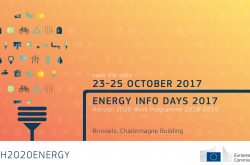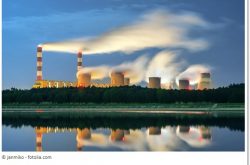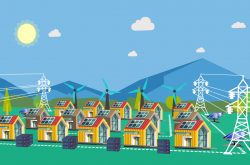Overview
Source: weforum.org
You don’t have to be working in the energy sector to have noticed there are some big changes under way. Over the past year, global conditions have continued to challenge the sector.
The year has seen significant changes in energy prices and production – oil and gas producers are cutting costs and are estimated to have deferred close to $400 billion in capital expenditure. We’ve also witnessed an economic slowdown in emerging economies, along with geopolitical change and instability, which effectively reshuffled energy supply and demand.
At the same time, and in spite of low oil, gas and coal prices, clean energy investments hit a record high of close to $330 billion in 2015, nearly six times higher than in 2004, with around one-third of it in China. The COP21 agreement could provide further impetus to growth in clean energy, as governments are implementing policies to deliver on commitments.
But in the same way that we can’t predict the future of climate change by looking at the weather outside, we can’t assess the energy transformation by observing only current events. Energy markets are volatile, as history has shown.
To make sense of these and other transformations, for the past four years, the Forum’s Energy Architecture Performance Index has benchmarked the energy systems of individual nations.
This year’s benchmark of 126 countries focuses in particular on energy security and access to energy, areas which have undergone a great deal of change. The report identifies the following three trends as key for this year:
1. The transition towards more renewable energy and diversified supplies is creating opportunities and challenges for the security of the global energy infrastructure. As renewables are now part of the energy portfolio and are rapidly gaining market share, they bring along benefits such as energy mix diversification, with distributed generation growing at a fast pace worldwide and its installed capacity expected to more than double in the next decade. At the same time, as the energy generation portfolio transitions and diversifies further, new challenges are emerging, which require changes to the electric utility business model and regulatory policies to ensure secure and reliable supply.
2. Digital disruption is creating new opportunities – but also threats. On the one hand, technology is instrumental for realizing intelligent grids and interconnected assets; on the other hand, it introduces new threats such as the possibility of cyberattacks. The increasing interconnectivity and proximity of energy systems means that conflicts can have ripple effects on energy markets and prices. New technologies, such as batteries and grid-embedded generation, are making the cybersecurity of grid systems more vulnerable. Global inexperience in handling large-scale cyberattacks, combined with the greater capabilities of state and non-state actors, has increased the likelihood that future wars and attacks will have a larger cyber component.
3. The rebalancing of energy supply and demand is leading to a new global energy security order. Recent drops in oil prices have led to a significant shift in wealth from net oil exporters to oil importers. At the same time, the development of unconventional sources of oil and gas, as well as the recent economic slowdown in emerging markets such as China and India, have contributed to price readjustments against the backdrop of a general shift in energy supply patterns. Geopolitical shifts, the new distribution of powers and energy trade flows will create challenges and opportunities for energy security in the new energy architecture.
So which countries are already managing to turn these challenges into opportunities? The chart below shows the 10 countries that got the best score in the area of energy security and access for 2016.

It is worth mentioning that only two countries out of the 10 in the list are energy exporters (Norway and Canada). All the other countries managed to make it into the top 10 even though they depend on outside supplies to fulfil their energy needs. This was possible thanks to their stable geopolitical situation and by a varied energy sources mix made up of both domestic supply and diversified imports.
But being a leader in energy security today does not mean this competitive advantage will carry through to the future. Tomorrow’s winners will be those who successfully manage two key transitions: from a technology standpoint, their operators must be able to benefit from digital innovation while at the same time building up a solid defence to cyberattacks. From a legal framework standpoint, their structures will have the necessary flexibility to adapt to an ever-changing environment.
Tomorrow’s challenge for the energy sector will be to achieve effective collaboration between all stakeholders involved, for the world to meet its future energy needs in a sustainable way.
Map
Visited 3152 times, 2 Visits today








